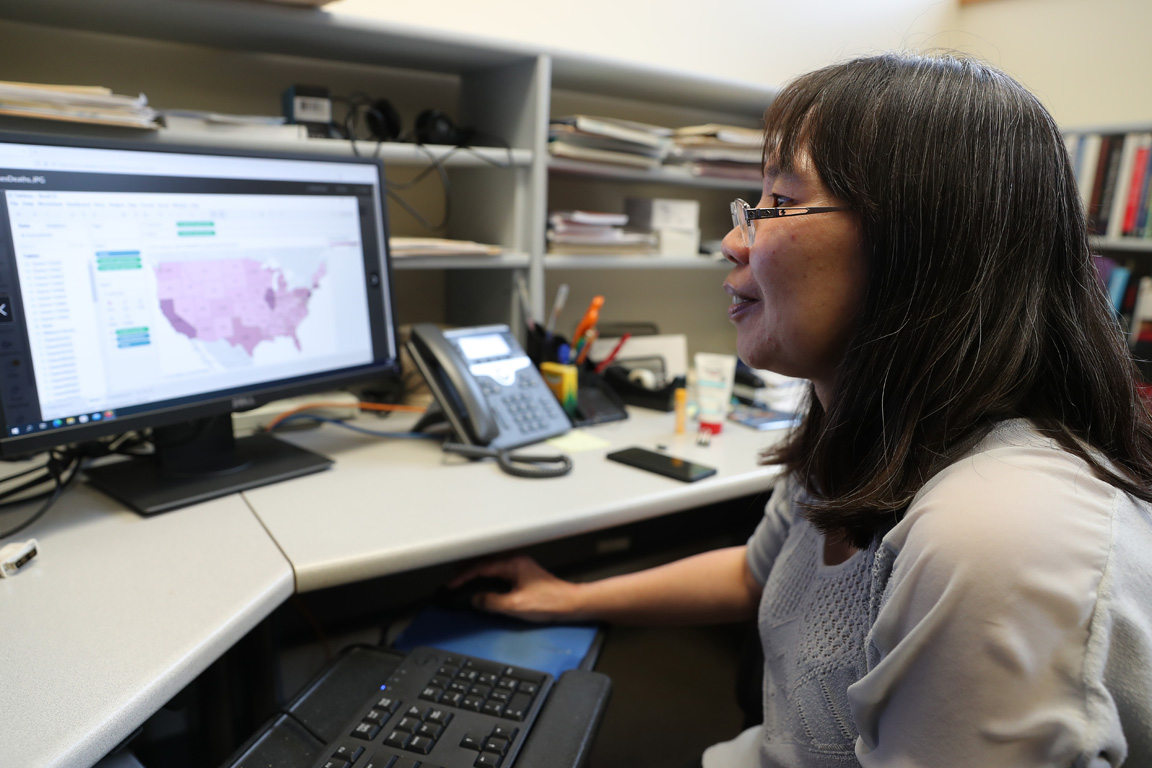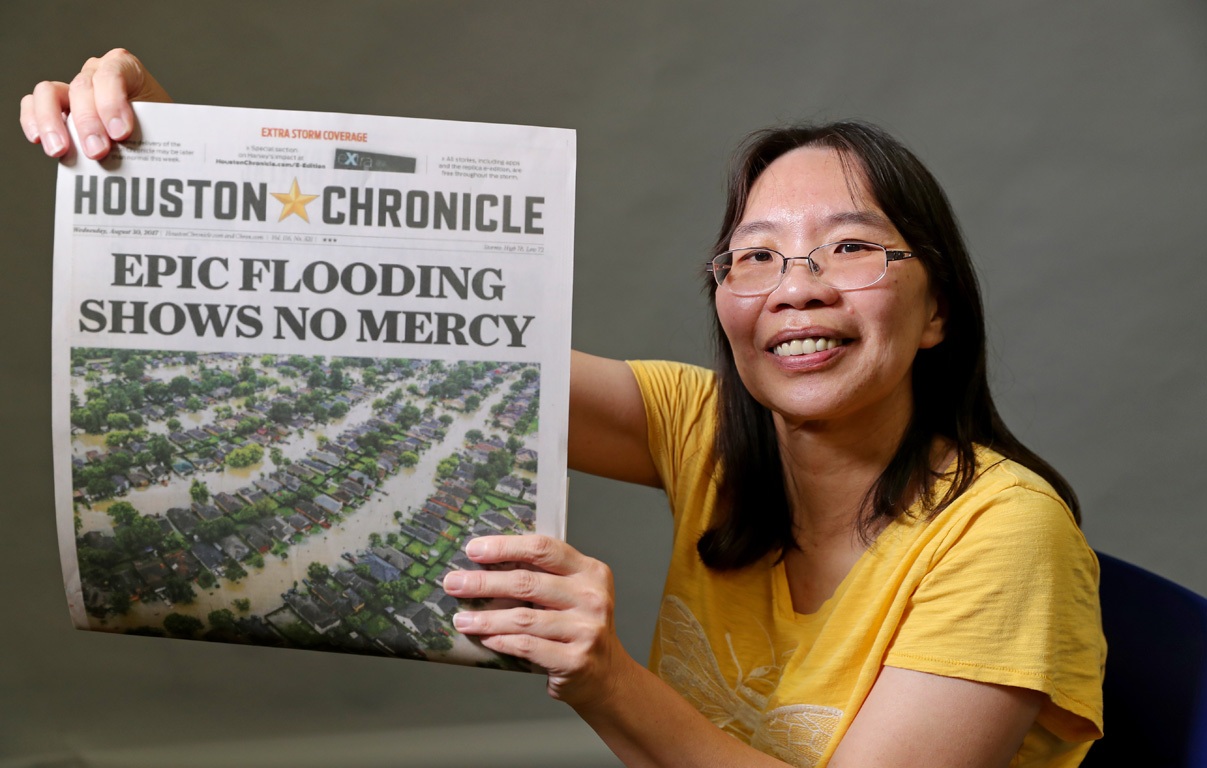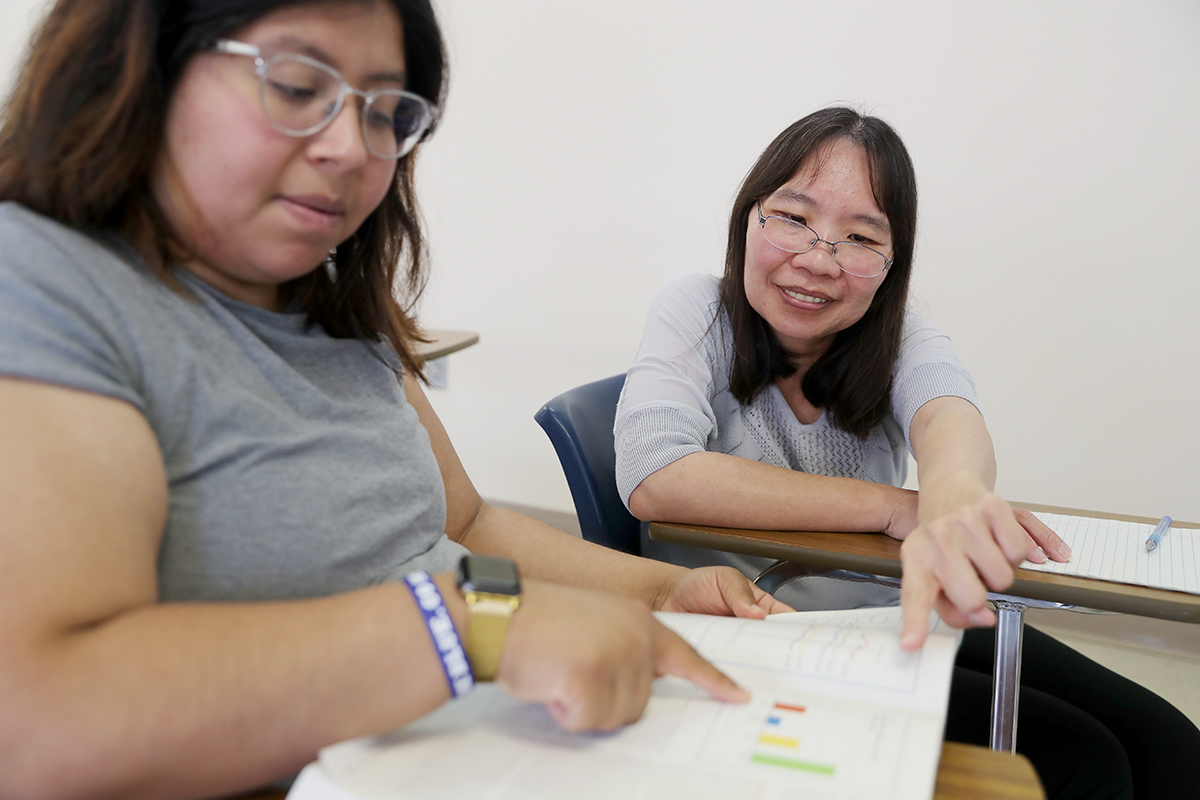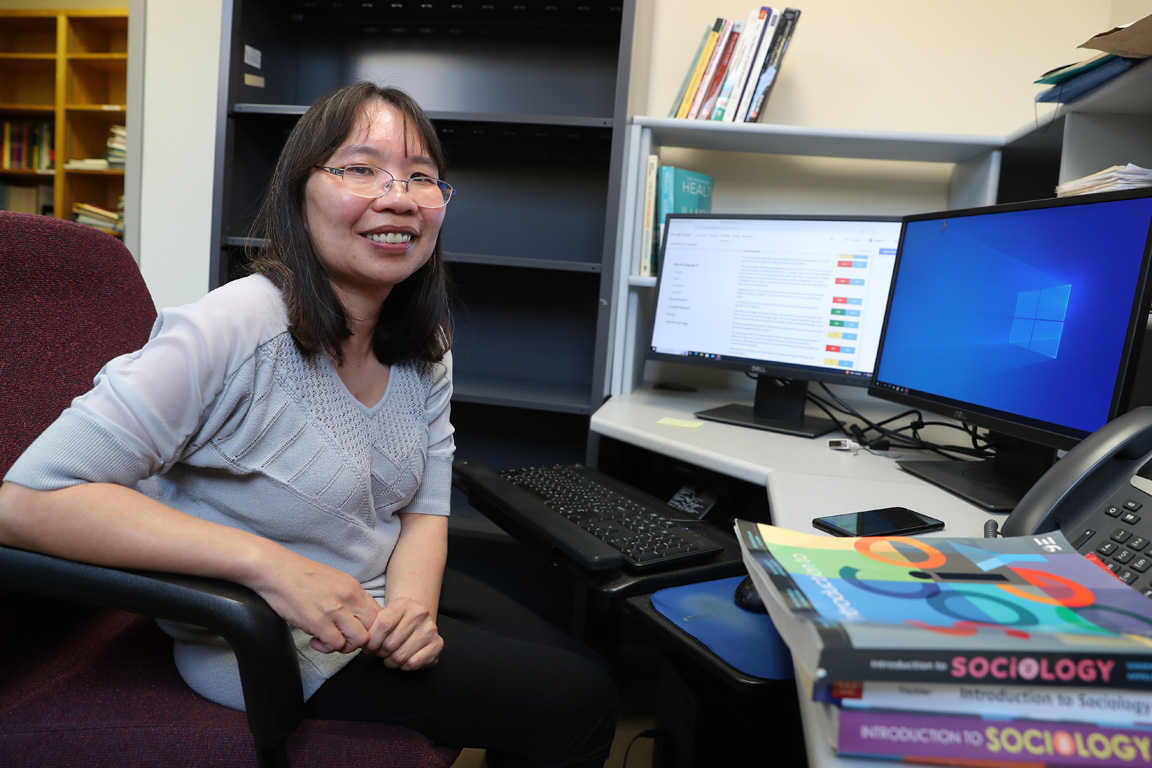
VIEW THE 2023 NEW FRONTIERS MAGAZINE FEATURING LIEW AND OTHER UNK FACULTY
By TYLER ELLYSON
UNK Communications
KEARNEY – Hui Liew’s research covers a lot of topics, from visual and cognitive performance to HIV and housing insecurity to hurricane damage.
That’s why she finds sociology so fascinating. It allows her to transcend traditional boundaries and draw upon various fields while shaping her research agenda.
“Sociology is an umbrella for many disciplines,” said Liew, an associate professor at the University of Nebraska at Kearney. “It’s intertwined with economics, public health, criminal justice, geography and psychology, among other things. Since sociologists don’t have techniques of our own, we borrow techniques from other disciplines to answer our research questions.”
It’s the perfect position for someone with a diverse educational background.
Originally from Malaysia, Liew earned a bachelor’s degree in accounting and finance, a graduate certificate in applied statistics, a master’s in data science and a doctorate in sociology. She utilizes those skills to uncover hidden patterns in publicly available data.
Medical sociology and aging are among her areas of expertise.
“Aging is something we can’t avoid,” Liew explained. “And as we age, we are bound to have more and more health problems. I use cutting-edge techniques in mathematical demography, applied statistics and data science to answer my research questions – to assess transitions among different BMI stages and to see how people progress from one stage of cognitive impairment to another or one stage of visual impairment to another.”
Oftentimes, there are overlapping factors at play.
In one study, published in the Journal of Visual Impairment and Blindness, Liew looked at data collected by the Social Security Administration and National Institutes of Health to determine how race, gender and education level can influence long-term vision changes. Her results show the progression from good vision to poor is significantly impacted by these characteristics, with ethnic minorities, females and people without a high school diploma all faring worse over time.
Similarly, she used data from the Census Bureau’s American Community Survey to draw connections between housing insecurity and HIV prevalence in certain Louisiana parishes. That study, published in the Journal of Rural Social Sciences, shows severe housing problems associated with higher HIV rates. These areas also had a higher percentage of Black residents.
“Regardless of what aspect of health I’m trying to analyze, whether it’s cognitive performance, Alzheimer’s, HIV or the different stages of BMI and diabetes, it seems that racial and ethnic minorities fare worse,” Liew noted. “Because of that, I think it’s important for policymakers and practitioners to develop programs and preventative strategies that address these racial and socioeconomic disparities.”
Liew hopes her research leads to more equitable access to health care, targeted interventions and widespread educational programs that can close these gaps and improve outcomes for everyone.

CAMPUS COLLABORATION
For her most recent publications, Liew teamed up with UNK colleague Nate Eidem to examine how land use and urbanization impacted damage levels in the Houston area during Hurricane Harvey.
The Category 4 storm caused an estimated $125 billion in damage after making landfall along the Gulf Coast in August 2017, making it the second-costliest hurricane in U.S. history. Liew and Eidem dug deeper into this figure, integrating data from the Federal Emergency Management Agency and Agency for Toxic Substances and Disease Registry to characterize the hardest-hit areas.
“We were able to take all of this data captured by satellite and combine it with information from other government websites to build a model to predict how land use affects the severity of damages and how unemployment and declines in median household income make it more challenging for local governments in certain areas to improve the area’s resilience to natural disaster amid these sociodemographic vulnerabilities,” Liew explained.
Their results show that urbanization, population growth and land-use changes impacted the area’s landscape and hydrological processes, making it more susceptible to flooding. They also found that damage was more severe in zip codes with an older population, increased unemployment and declining household incomes, making it more challenging for people to recover.
“What we could learn from Houston is that initiatives to promote economic development should occur in tandem with disaster preparedness and mitigation initiatives,” they wrote. “It is logical to assume that this may slow down economic development, especially in the short run.
Nevertheless, because processes associated with urbanization and economic development may alter the ecological systems and biodiversity of an area, maintaining environmental sustainability by incorporating these initiatives into the strategies to promote an area’s economic growth will enhance its resilience in the long run.”
The researchers published their pioneering study in the Journal of Homeland Security and Emergency Management and Community Development: Journal of the Community Development Society.

EMPOWERING STUDENTS
Liew enjoys research because there’s always an opportunity to discover new things.
“When we use a new technique to analyze existing data, sometimes we see something that people hadn’t seen before,” she said.
She also connects it to the classroom, where she teaches courses such as Introduction to Sociology, Social Problems, Sociological Inquiry, Research Methods, Aging, Introduction to Social Demography and Sociology of Health and Illness.
Her students gain valuable insights and enhance their analytical skills by analyzing diverse forms of data and utilizing modern tools like Google’s Natural Language AI platform and Tableau. Many of them present their research at the Nebraska Undergraduate Sociological Symposium and other conferences.
“I do my best to help students develop their sociological imagination skills,” Liew said. “I also want them to have a better understanding of the interlocked components of theoretical and conceptual frameworks and research methods.
“Sometimes I share my research with them to explain how this theory you learn in class can be tested on existing data. Maybe the techniques are beyond the class students are taking right now, but I can still tell them, ‘This theory or this concept, they do not exist in thin air. We can actually test them.’”
HUI LIEW
Title: Associate Professor, Sociology
College: Arts and Sciences
Education: Ph.D. in sociology, Mississippi State University, 2009; Graduate certificate in applied statistics, Penn State University, 2010; Master of Science in data science, Northwestern University, 2014.
Years at UNK: Seven
Research in My Words: I do my best to help students develop their sociological imagination skills and understand the theories and methods of the discipline. My publications contributed to understanding the trajectories in late-life alcohol consumption, weight categories, visual and cognitive performance, and the spatial temporal clustering of HIV, COVID-19, housing insecurity and other health trends using cutting-edge techniques in statistics, mathematical demography and data science.
Areas of Research/Specialization: Medical sociology, applied demography, aging and applied statistics.
Courses Taught: Introduction to Sociology, Social Problems, Introduction to Social Demography, Sociological Inquiry, Research Methods, Aging and Sociology of Health and Illness.
Recent Published Articles: “Examining the Potential Impacts of Social Vulnerability on Damage Levels in Areas Affected by Hurricane Harvey,” Journal of Homeland Security and Emergency Management, 2022. “Examining the Potential Impacts of Processes Associated with Urbanization and Land Use Changes on Inundation Depths in Areas Affected by Hurricane Harvey in Houston,” Community Development: Journal of the Community Development Society, 2021. “Assessing the Longitudinal Change in the Low Vision: A Test of Competing Hypotheses,” Journal of Visual Impairment and Blindness, 2021.
PHOTOS BY ERIKA PRITCHARD, UNK COMMUNICATIONS
